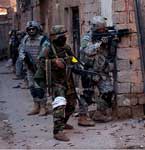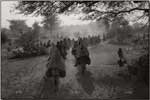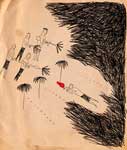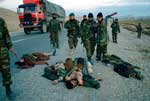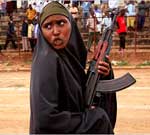Chris Hondros has seen the world at war first hand – and so has his camera lens.
Working for Getty images as a war photographer for almost a decade, he has captured militiamen crying out in battle in the Second Liberian Civil War, American soldiers on raids in Iraq and children in the arms of their mothers in Sierra Leone’s refugee camps.
Hondros brought these images, his experiences and his personal comments to Pitt yesterday afternoon in a lecture facilitated by the global and film studies departments, PittArts and Pittsburgh Filmmakers. About 70 people crammed into room 501 in the Cathedral of Learning for a slideshow of Hondros’ work and to hear his commentary.
Check it out here.














